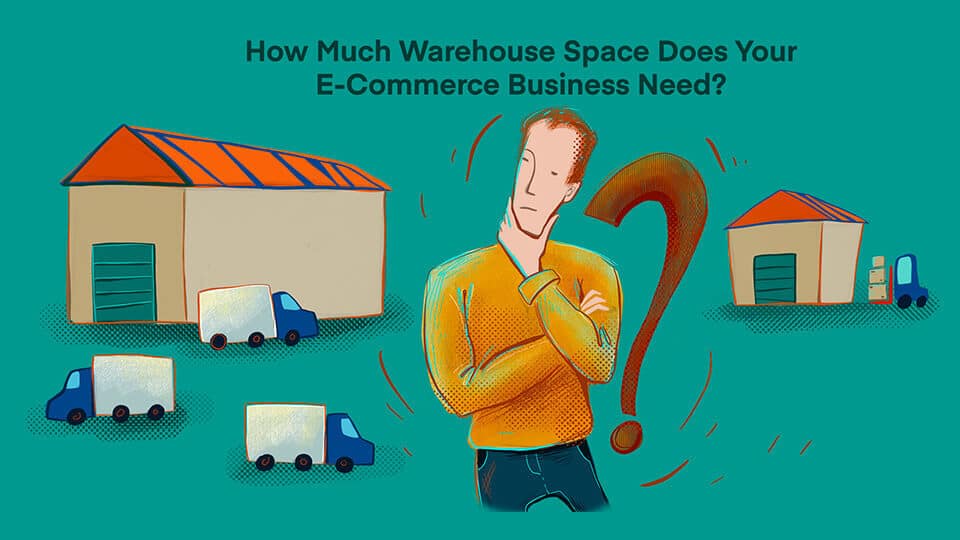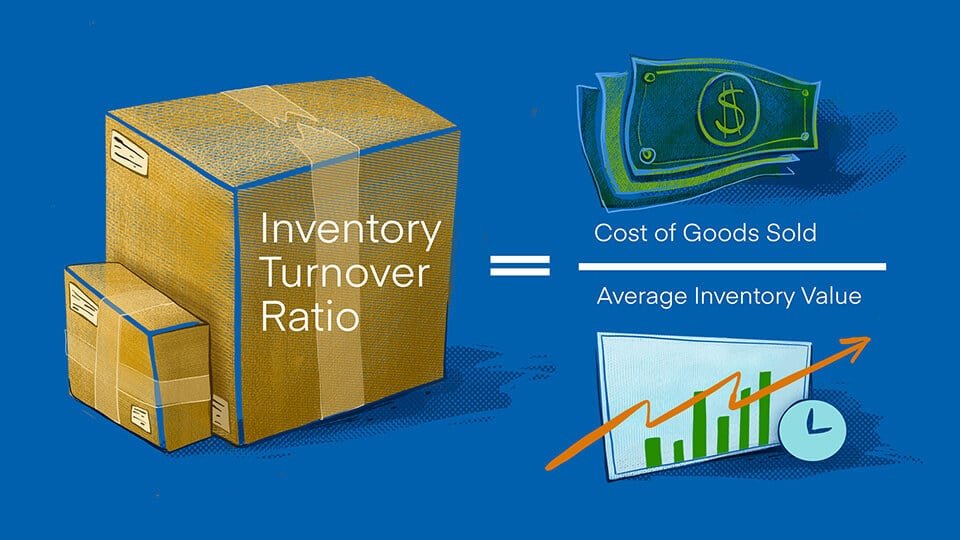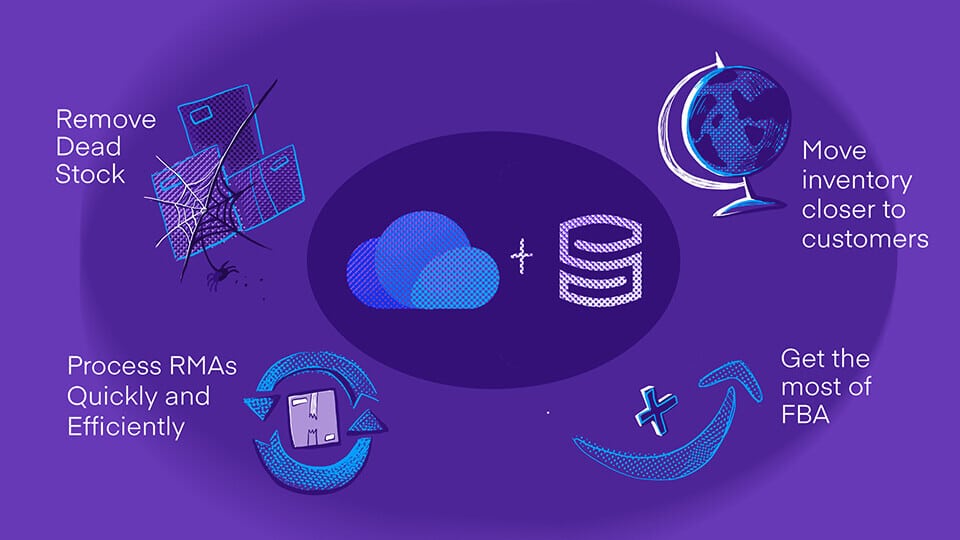Third-party logistics (3PL) providers can be useful partners in scaling your e-commerce business, but they have their limits. Added costs, lack of control, unfavorable terms of service, and the potential for unexpected policy changes can all impact the effectiveness and profitability of your brand over time. For these reasons, many omnichannel e-commerce businesses opt to take the reins of their own fulfillment by establishing and operating their own warehouses.
Much of the success of an e-commerce warehouse comes down to effective planning.
If done well, investing in a physical space for your stock, inventory, and order processing can save you substantial time, money, and frustration compared to third-party options. As such, setting up your own warehouse can be a key ingredient in an omnichannel growth strategy.

To get your planning started, we have compiled some of the most important details you need to be considering from the outset.
Location
Choose the optimal location to maximize the value and efficiency of your warehouse
Making the right decision of where your warehouse(s) should be located means considering the answers to several questions.
Where is your headquarters?
The proximity of your home base to your warehouse has several implications for both your bottom line and your ability to manage your
inventory.
The closer your warehouse is to your headquarters, the easier it is to supervise and conduct on-site business without requiring extensive travel.
Similarly, the shorter the distance between your headquarters and your warehouse, the quicker and more cost effective it is to move physical goods between locations as well.
Where are your suppliers?
Well-placed warehouses can be crucial to shortening your supply chain. If this is a particular concern for your e-commerce brand, you can help get the stock and materials you need in hand and into your brand’s pipeline faster by opting for warehouse locations in closer proximity to your suppliers’ bases of operation.

Where are your customers?
Shorten fulfillment times and improve customer satisfaction by choosing warehouse locations near to your most popular shipping destinations.
In some cases, a centralized location may be best. In others, choosing a location on the other side of the country can give your brand improved bi-coastal fulfillment capabilities. Taken further, an established warehouse overseas can be a valuable asset in localizing your brand in international destinations.

Where are your shipping partners?
Depending on what you ship and who handles your shipping, it may be worth considering where your freight suppliers’ hubs are located when choosing your own optimal warehouse location.
Shortening these distances can make moving inventory a faster and less-expensive proposition.
In all likelihood, you may not be able to find one location that suits every one of the aforementioned needs perfectly, but the optimal destination should give you the best possible balance of logistical efficiency and cost-effectiveness.
Size and Space
Determining the optimal scale of your warehousing needs is critical to ensuring that you are maximizing the value of your warehouse investments.
The size of your ideal e-commerce warehouse should be determined based on a combination of your short-term needs and your long-term growth goals.
Calculate warehouse capacity
When shopping for warehouses, you need to be sure to do the math to understand how much usable warehouse space a location has to offer. Start by taking the total space of a prospective property and subtracting any non-storage space (bathrooms, utility rooms, etc.). Multiply this usable space figure by the maximum stack height and you have an idea of just how much storage capacity a warehouse truly offers.


Satisfy your immediate needs
Using your current inventory turnover ratio as a measuring stick, you should be able to determine the quantity of merchandise you need on hand to keep up with demand. By factoring in the physical size of your stock and inventory, you should be able to calculate the warehouse size that you need. Settling for a warehouse that doesn’t meet these basic requirements would minimize – or even eliminate – its value.
Consider your order-processing workflows
Just as you need to consider the space needed to house your stock, don’t ignore the space necessary to move and process inventory safely and efficiently as it enters and leaves your warehouse. Scalable order-processing tools and warehouse management systems (WMS) can give you the flexibility to configure the movement of goods and information throughout your warehouse, but you need to be sure to account for the room and technological infrastructure your warehouse team will need to get the most out of them.
Plan for your future growth
Large-scale investments like a warehouse should always be made with an eye toward the future. Scalability must be a priority for any omnichannel e-commerce brand. The ideal warehouse satisfies your immediate needs, but leaves enough room to grow so that you won’t need to be searching for a new location the moment business picks up.
Pitfalls
For all their benefits, warehouses can become a drain on your resources and actually hamper your productivity if you overlook certain potential pitfalls.
Some of the most common mistakes e-commerce brands make when opting to open their own warehouses include:
Ignoring costs
Each of the aforementioned considerations come with their own cost ranges that must be accounted for before settling on a final warehouse location.
- Real estate prices vary by region. On the macro-level, warehouses will cost significantly different prices across different foreign and domestic regions. As demand continues to rise, so will prices. On the micro-level, locations in neighboring municipalities or even in the same cities can range in price and tax-rates depending on market and neighborhood-level conditions.

- Set-up costs – A warehouse is typically a blank slate. You need to budget for the time and expenses associated with configuring a warehouse so that it is optimized for your e-commerce workflows and storage requirements. This means accounting for physical purchases like racks and forklifts, as well as technological considerations like your power, networking, safety, and security needs.
- Labor – A warehouse won’t run itself. Labor costs and regulations vary by region and can have as much of an impact on your bottom line as the price of the warehouse itself.
- Relocation expenses – Finding the perfect warehouse location can lead to stability and scalability that will foster long-term e-commerce brand growth. However, having to move to a new warehouse at the end of a lease or when you outgrow the space can be costly.
Getting too little warehouse for your money
Just like any other real estate transaction, you need to be aware of the market to be sure that you are making a sound investment.
One of the goals of investing in your own warehousing is to save money and take more control over your e-commerce brand’s inventory and fulfillment needs. If you are overpaying for your space or settling for too small of a location, you may not be able to fully reap those benefits.
Overlooking environmental risks
Even if a particular warehouse checks all of your boxes, there may be considerations that you are missing. Don’t ignore environmental factors like flood zones, fire risks, storm potential, or earthquakes that could lead to unexpected damages or loss. Furthermore, these factors – as well as others (like crime, HVAC equipment, building age, proximity to toxic materials, etc.) – can drive up your insurance costs, cutting into the overall profitability of your warehouse.
Solutions
Make a data-driven decision
Put in the time to calculate what the ideal warehouse is for your brand and where it should be located.
Only you know the extent of your e-commerce warehousing needs. Consider factors like your year-over-year growth metrics, seasonal inventory needs, current fulfillment costs, and customer locations before even beginning to tour locations. Armed with this information, you can be sure that you are making data-driven, cost-effective decisions.

Set your priorities
The odds are slim that you will be able to find a warehouse that is exactly the right size in exactly the right location for exactly the right price. It is likely that there may be some areas in which compromises will have to be made. Going into your warehouse search, know which criteria you are willing to be flexible on and which are must-haves. Be sure not to lose sight of your reasons for wanting to run your own warehouse in the first place.
Choose a scalable, growth-based warehouse management system (WMS)
Ultimately, a warehouse is just a large space. It is up to you to make the most of what happens inside of it. To keep your entire business running smoothly, you need an omnichannel e-commerce growth platform that combines a WMS, inventory tools, data tracking, reporting features, catalog management, and user-friendly technology. Your platform also needs to integrate with all of the third-party marketplaces, logistics providers, suppliers, and shipping partners you rely on to operate.
Sellercloud provides customers with all of this and more. Our cloud-based platform allows you to coordinate your entire e-commerce business across multiple teams and locations so that every aspect of your brand runs smoothly and reliably. We offer integrations with over 120 industry-leading e-commerce partners so that your data and inventory can move seamlessly between the third-party vendors your brand depends on. What’s more, our growing collection of affordable, patented warehouse technologies are as scalable as they are intuitive.

Whether you are looking to establish your first e-commerce warehouse or expand into multiple locations, Sellercloud is the partner you need to keep your operation running smoothly today and ready to grow into the future.